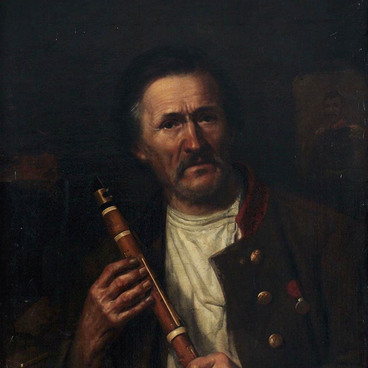In the late 18th — early 20th century, many famous artists from across Europe worked in the Russian Empire. Most often they were commissioned to paint formal portraits (with the corpus of such works known as “Rossica”). The Sevastopol Art Museum exhibits a fine example of European formal half-length portrait — “Portrait of Countess Alexandra Branitskaya” by Joseph Mathias Grassi.
Joseph Mathias Grassi (1758–1838) was an Austrian portrait painter, representative of academism, brought up on the best examples of European classicism. He studied at the Academy of Fine Arts in Vienna, was a member of the Accademia di San Luca in Rome, as well as a Knight of the Grand Cross of the Saxon Order of Merit. Joseph Grassi later moved to Warsaw, where, working from 1791 to 1794, he gained wide popularity as a portraitist. During his time in Warsaw, he created many portraits of the Russian and Polish aristocracy. Later, he lived, worked, and taught in Dresden.
In this ceremonial portrait, the social characterization of the woman is given, with the family’s nobility shown, the posture and gesture thoroughly elaborated, the clothes and the oriental turban, in vogue at the time, carefully detailed. The artist did not seek to reveal the inner world of the model, but slightly softened the formal nature of the painting with a landscape background.
Countess Alexandra Vasilyevna Branitskaya, née Engelhardt (1754–1838), was a niece of the all-powerful Prince Grigory Alexandrovich Potemkin-Tauricheski, wife of the Polish crown hetman Franciszek Ksawery Branicki, and mother of the mistress of the Alupka Palace Elizaveta Xaverievna Vorontsova. She was a famous philanthropist and had a colossal fortune (according to her accounts, by the end of her life it reached 28 million rubles). For many years, the countess lived in one of her estates in Bila Tserkva (Biała Cerkiew) with a park beautifully arranged according to her plan. Under Catherine the Great, Alexandra Vasilyevna was granted the title of a chamber maid, entered the intimate circle of the empress, and became her confidante. Under Nicholas I, Branitskaya received the court post of the Chief Court Mistress (Obersthofmeisterin), and during her visits to St. Petersburg stayed right in the palace.



